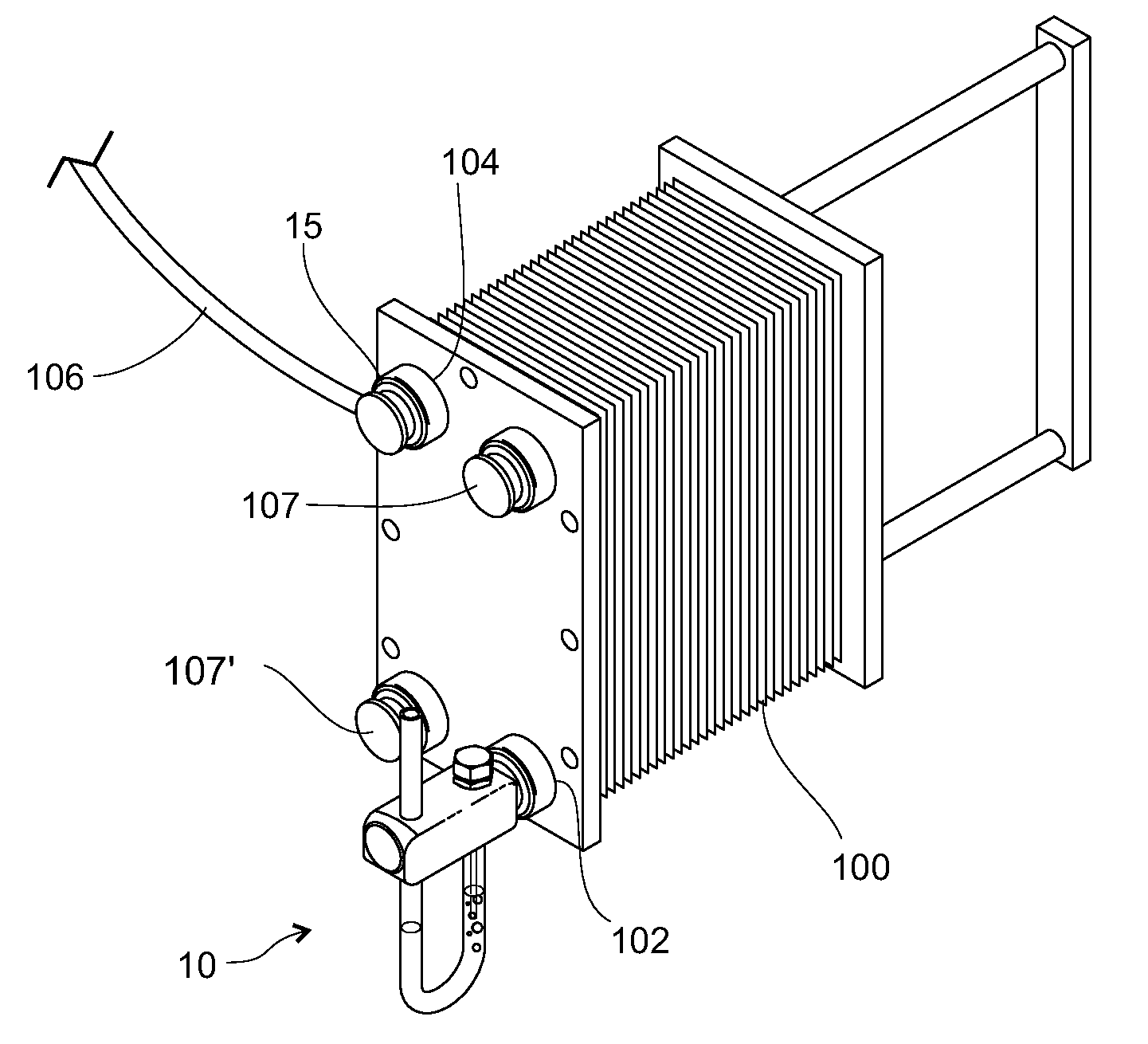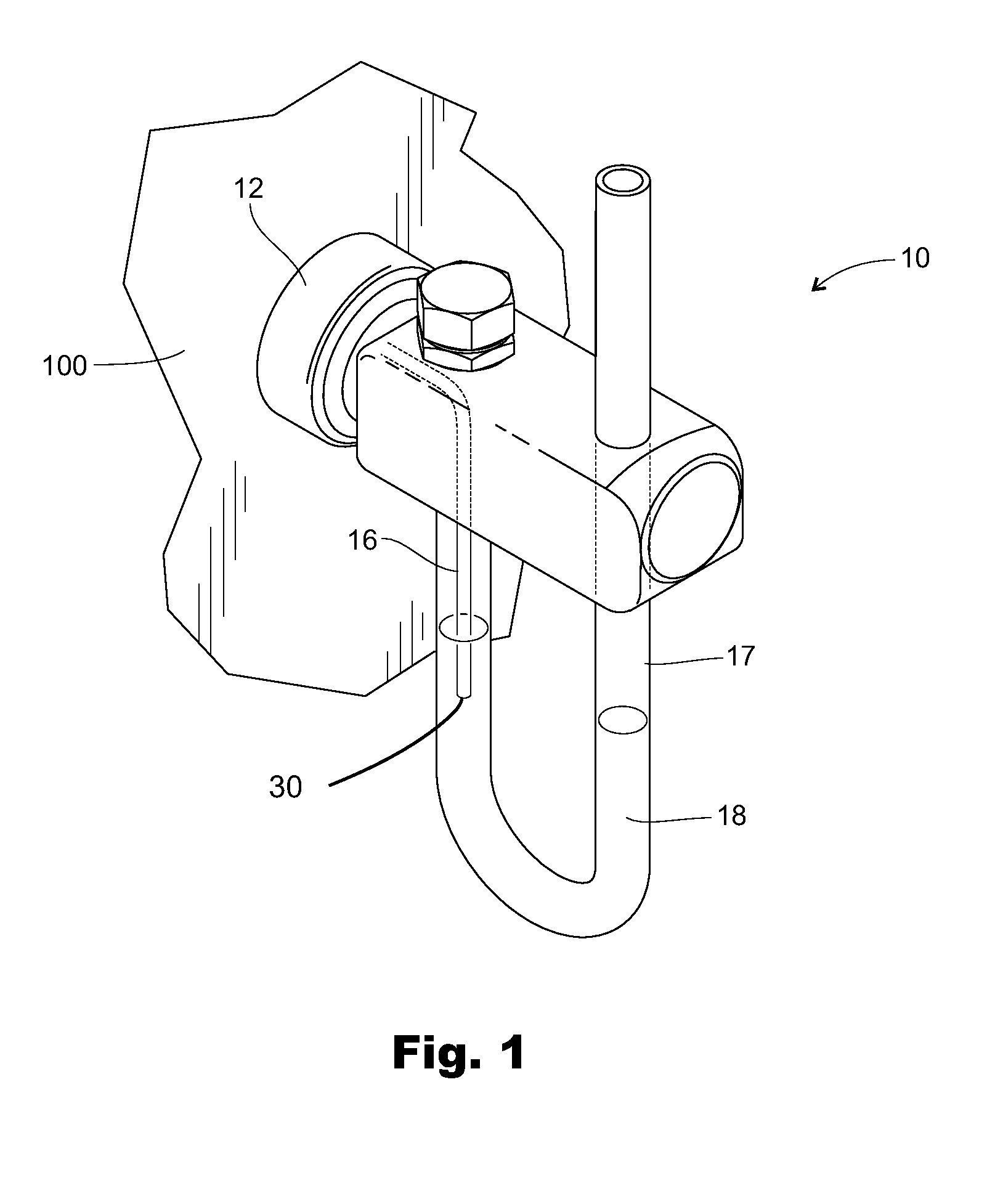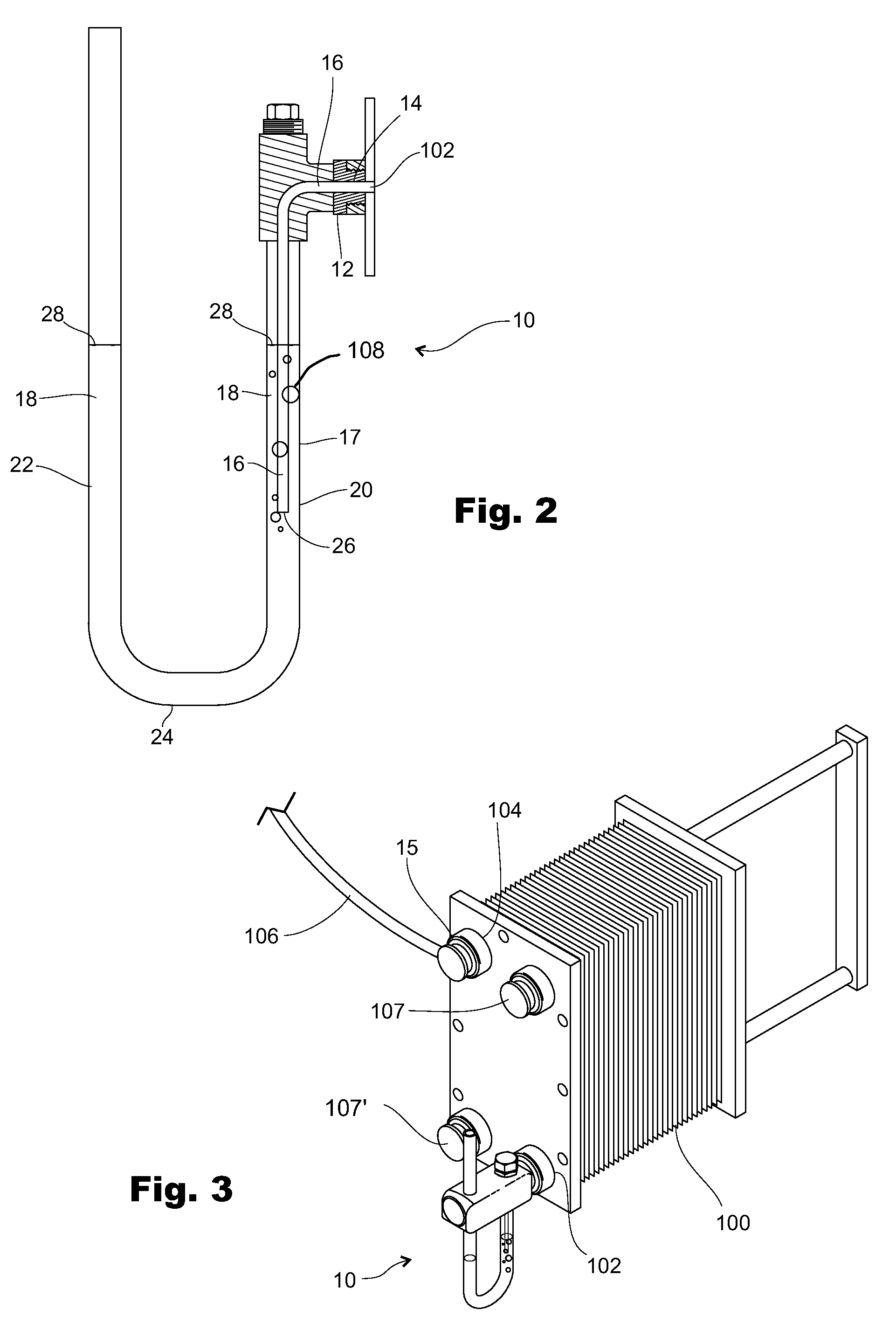Leak detector for heat exchanger
a technology of leak detector and heat exchanger, which is applied in the direction of measuring devices, instruments, structural/machine measurement, etc., can solve the problems of pressure build-up in the container above the water, and achieve the effects of convenient removal, quick installation, and low cos
- Summary
- Abstract
- Description
- Claims
- Application Information
AI Technical Summary
Benefits of technology
Problems solved by technology
Method used
Image
Examples
Embodiment Construction
[0014]The gas leak detector 10 of the present invention for use with a heat exchanger 100 comprises a modified port plug 12 adapted to fit in a first heat exchanger port 102 that provides access to a heat exchanger's first side (not shown), with a hole 14 through the modified plug 12. A second port plug 15 connects to second heat exchanger port 104 to which a supply of pressurized air 106 is connected. The second heat exchanger port 104 provides access to a heat exchanger second side (not shown). A tube 16 extends from the hole 14 into a container 17 that can be filled with a liquid 18, typically water.
[0015]The container 17 is a generally U-shaped with first and second legs 20, 22 extending upward from a bottom 24. The first leg 20 connects to the modified plug 12 with an air tight seal. The tube 16 extends from the modified plug 12 into the first leg 20 of the U-shaped container 17 to a tube end position 26 below a position 28 to which water, or other equivalent liquid, is filled ...
PUM
 Login to View More
Login to View More Abstract
Description
Claims
Application Information
 Login to View More
Login to View More - R&D
- Intellectual Property
- Life Sciences
- Materials
- Tech Scout
- Unparalleled Data Quality
- Higher Quality Content
- 60% Fewer Hallucinations
Browse by: Latest US Patents, China's latest patents, Technical Efficacy Thesaurus, Application Domain, Technology Topic, Popular Technical Reports.
© 2025 PatSnap. All rights reserved.Legal|Privacy policy|Modern Slavery Act Transparency Statement|Sitemap|About US| Contact US: help@patsnap.com



